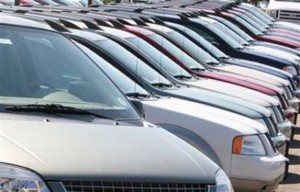
Sales slump continues, J.D. Power cutting annual forecast by 1 million.
The President may be asking Americans to focus on the future, but the present isn’t looking very good, if the latest forecast from J.D. Power and Associates is any indication. The California-based market research firm is cutting its 2009 new car sales forecast by 1 million, with preliminary data showing the downturn is continuing in February.
For the first 22 days of this, the shortest month, new vehicle sales were off a hefty 38 percent, compared with a year ago, reported Power. Working those numbers out on an annualized basis, and it would come to an anemic 9.1 million vehicles, barely half the industry’s total during the early part of this decade.
That is a slight improvement from what Power saw during January, however, the firm notes. But even so, the light vehicle sales forecast contains little, if anything, to celebrate. Using data provided by 10,000 dealerships across the U.S., JDPA predicts that 2009 sales will come in at a weak 10.4 million, about a million below its earliest forecast.
“All automakers are feeling the economic pressure and the effects of record-low consumer confidence,” Gary Dilts, senior vice president of global automotive operations at J.D. Power and Associates, said in a statement from the company. “Each one of the 10 major new-vehicle manufacturers suffered a retail sales decline in early February, compared with one year ago.”
Reflecting what is, at best, cautious optimism within the industry, Jeff Schuster, Power’s executive director of global forecasting, added that, “We believe we are nearing the bottom of this cycle.” But he quickly cautioned that there remains, “a high degree of uncertainty and risk” in the economy that could block the anticipated automotive recovery.
For his part, the Toyota division’s marketing chief, Bob Carter, cautioned that the Power sample is “small,” and can show significant deviations during a partial-month cycle, but he acknowledged that there are few signs that the auto slump is anywhere near over yet. And even when it does hit its low point, added Carter, a turnaround will occur at a painfully slow pace.
